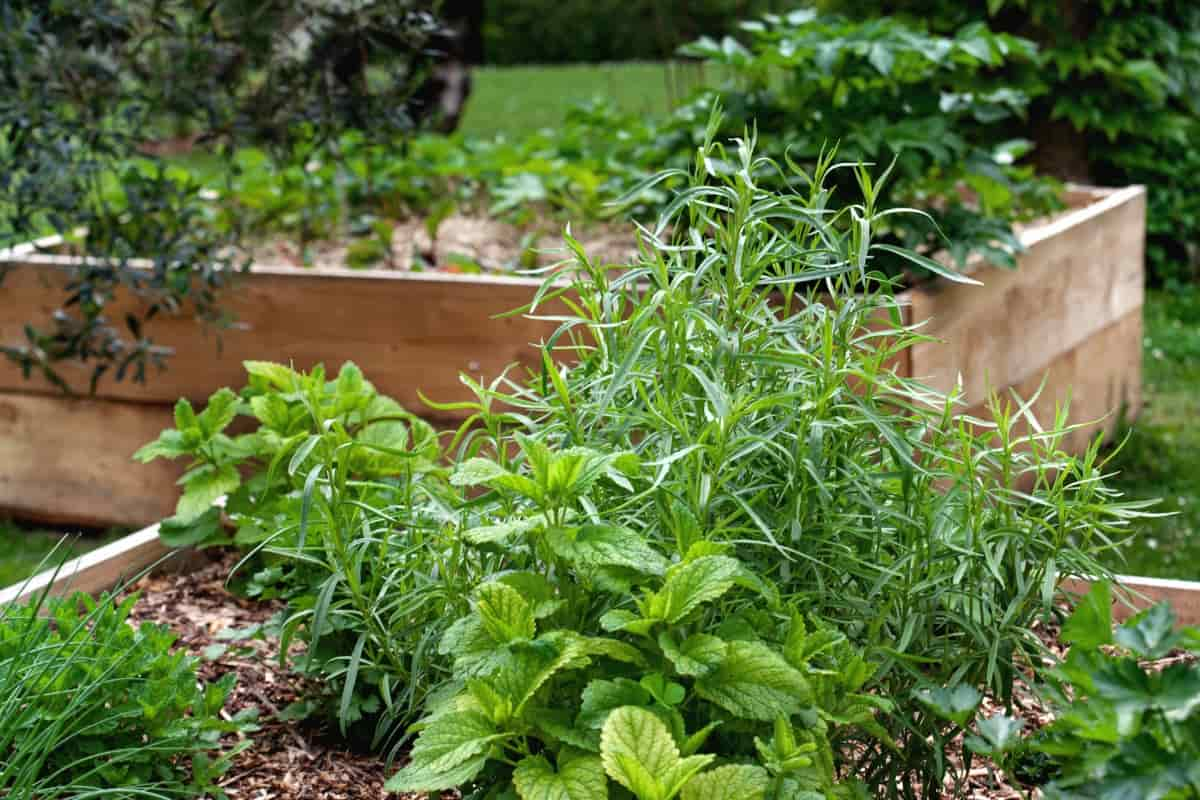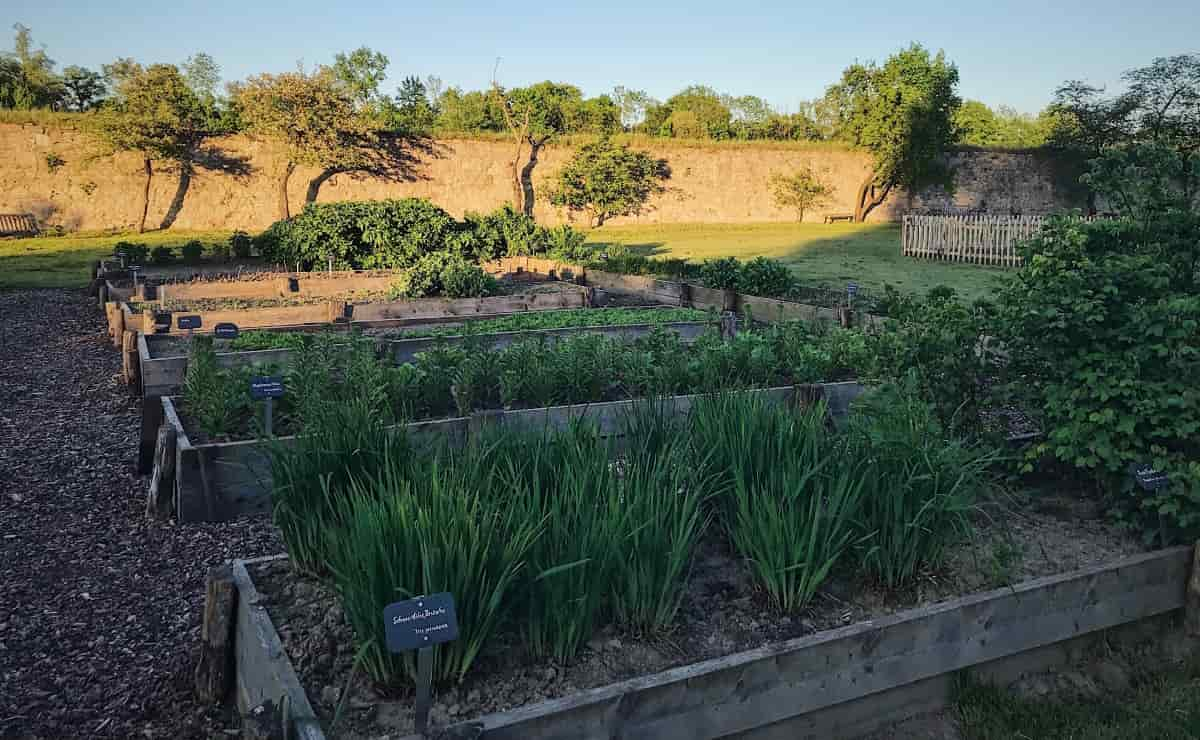Raised bed gardening has become increasingly popular and for a good reason. Raised bed herb gardening is an excellent way to grow fresh herbs at home. For selecting which herbs to plant in your raised bed, it’s important to consider the depth of their root systems. Herbs with shallow roots are ideal for planting in a raised bed, as they don’t require deep soil.

How to Grow Herbs on Raised Beds
Best Soil for Raised Bed Herb Garden
- The ideal soil type for a raised bed herb garden is sandy loam. This soil type is loose and well-draining, allowing water to flow through easily without becoming waterlogged.
- In addition to being well-draining, sandy loam also contains organic matter that provides essential nutrients to your plants. Organic matter can come from compost or other natural sources like peat moss or leaf litter.
- Another advantage is that raised beds provide easier access to your plants. Additionally, you have more control over your soil quality in a raised bed since you can fill it with a nutrient-rich potting mix.
- It’s important to note that the native soil in your yard may not be suitable for growing plants, especially if it has poor drainage or subpar composition. It could even contain harmful substances like heavy metals or pesticides that could harm your herbs.
- Investing in good quality sandy loam soil will pay off in healthier and more productive herb plants in your raised bed garden.
Selecting and Preparing a Raised Bed for Growing Herbs
- Choose the location carefully, and you want a location that receives 6 hours of sunlight daily and has good drainage.
- Next, decide on the raised bed size and shape. It would help if you could reach all areas of the bed without stepping inside. The depth of the bed is also crucial – make sure it’s deep enough to accommodate 12 inches of soil below the bed.
- Remove any weeds from the area when preparing the soil for your raised bed. Add compost or organic matter to improve soil quality and fertility.
- If you’re using pressure-treated lumber or other potentially toxic materials for your raised bed frame, consider lining it with plastic sheeting before adding soil. This will help prevent any leaching into the surrounding soil.
Planting and Caring for Your Herbs on Raised Beds
- Planting your herbs in a raised bed is an enjoyable activity that can be done all year round. Before planting, make sure to choose the right location for your raised bed, as this will ultimately determine the success of your herb garden.
- When planting, ensure that you space out your herbs properly. This will prevent overcrowding and allow each plant to receive adequate sunlight and nutrients. It’s also important to water regularly, especially during the hot summer when plants dry out quickly.
- Fertilizing is another essential aspect of caring for your herbs. Use organic fertilizers or compost instead of synthetic ones, which can harm beneficial microorganisms living in the soil. Watch for pests like aphids and spider mites, which can damage leaves and hinder growth.
- Pruning is crucial for maintaining healthy plants and preventing disease from spreading throughout the garden. Remove any dead or yellowed leaves regularly using sharp scissors or shears.
In case you missed it: Frequently Asked Questions About Raised Bed Gardening

How Deep to Plant Herbs in a Raised Bed?
- For growing herbs in a raised bed, the important factor to consider is the soil depth. Herbs should be grown in soil at least 4 to 5 inches deep. This allows their roots enough room to spread out and access nutrients and water.
- If your raised bed is less than 8 inches deep, you may want to consider planting shallow-rooted herbs like chives or parsley. On the other hand, if planning on growing taller herbs like rosemary or sage, it’s best to go for a deeper raised bed.
- It’s also important not to overfill your raised bed with soil, leading to poor drainage and root rot. A good rule is to fill your raised bed about two-thirds with soil.
List of Herbs that Grow Well on Raised Beds
- Rosemary is a popular choice for raised bed herb gardens because it can tolerate dry conditions and doesn’t require much fertilizer.
- Oregano is another great option, as it prefers well-draining soil and can grow quite tall if given enough space.
- Dill is a versatile herb that grows quickly and has many culinary uses. Dill plant prefers full sun but can also tolerate partial shade.
- Sage is another hardy herb that thrives in raised beds and requires little maintenance once established.
- Mint is an easy-to-grow herb that spreads rapidly, so it’s best planted in its container within a raised bed or regularly trimmed back.
- Parsley adds flavor and color to dishes, high in vitamins A and C.
- Chives are a delicious addition to soups, salads, and dips; they’re also very low-maintenance plants that do well in containers or small spaces like raised beds.
- Coriander (cilantro) does best when planted directly into the garden rather than starting from seedlings.
How Often Should I Water My Herbs in a Raised Bed?
Herbs grown in raised beds require regular watering, especially during hot and dry weather. This will depend on the type of herb, soil drainage, and weather conditions. Generally, you should keep the soil moist but not waterlogged.
Harvesting and Using Your Herbs
- Harvesting and using your herbs is one of the most rewarding parts of raised bed herb gardening. The best time to harvest herb plants is in the morning. Then this will get the maximum flavor from your herbs.
- When harvesting, always cut back no more than one-third of the herb plant at a time, leaving enough foliage for photosynthesis and future growth. You can use scissors or shears to make clean cuts.
- Once harvested, there are many ways to use your fresh herbs. Add them to salads, soups, stews, or dressings for flavor and nutrition.
In case you missed it: How to Start Vegetable Raised Bed Gardening from Scratch: A Step-By-Step Planting Guide for Beginners

Conclusion
Growing herbs in raised beds is a great method to add fresh flavor to your cooking and beautify your outdoor space. With the right soil, depth, and care, you can have a bountiful herb garden that’s easy to maintain year-round. Raised beds offer better drainage than traditional garden plots. By elevating the soil level, water is less likely to pool around the roots of your herbs and cause rot or disease.
- Feed Your Flock for Less: Top 10 Tips to Save on Chicken Feed
- Ultimate Guide to Ossabaw Island Hog: Breeding, Raising, Diet, and Care
- Hatching Answers: The Top 10 Reasons Your Chickens Aren’t Laying Eggs
- Eggs and Economics: Breaking Down the Cost of Raising Backyard Chickens
- Defend Your Greens: Proven Methods to Keep Iguanas Out of Your Garden
- Ultimate Guide to Cinnamon Queen Chicken: A Comprehensive Guide for Beginners
- Ultimate Guide to California Tan Chicken: Breeding, Raising, Diet, Egg-Production and Care
- Ultimate Guide to Marsh Daisy Chicken: Breeding, Raising, Diet, and Care
- 10 Types of Chicken Farming Businesses You Can Start for Profits